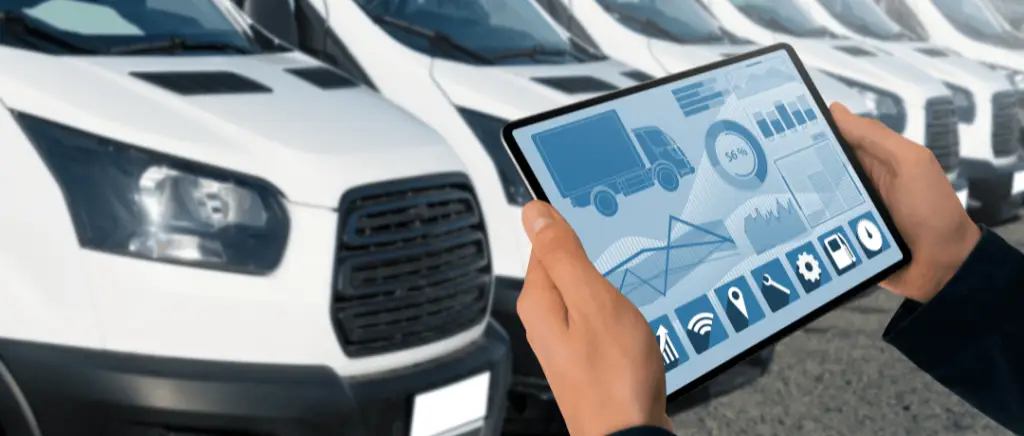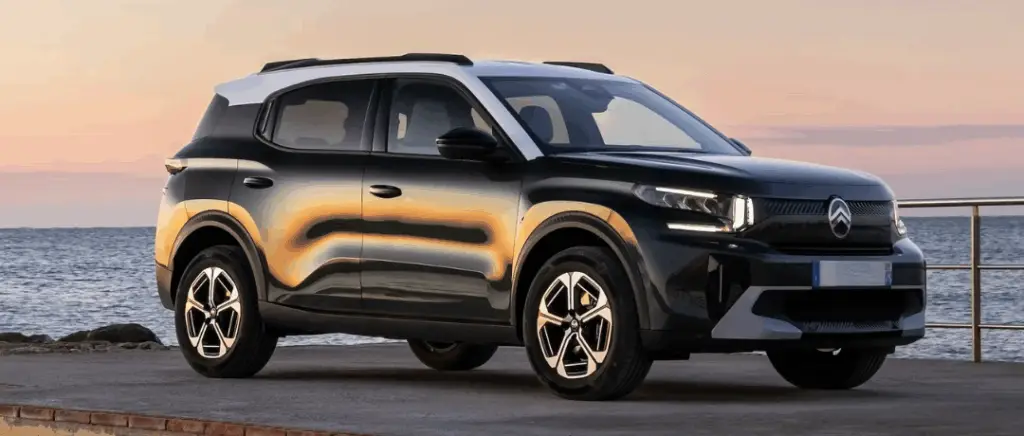Overview of the electric vehicle fleet in companies
Despite an uncertain economic climate, companies are continuing to move towards greener car fleets, although the pace of this transition is slower than expected. According to data from the NGO Transport & Environment, 66% companies, 64% from local authorities and 87% from State administrations do not meet the greening quotas imposed by law.
To consult : Ecological transition: 60 % of the 3,447 French companies concerned do not comply with the LOM law
Going a step further, this is why Damien Adam, MP for the "Renaissance" political party, had made a proposed law mid-2024 consisting of strengthen regulations on the decarbonisation of company fleets by setting up a stricter frameworkThis means shorter application deadlines and fines for companies that fail to meet the quotas. It should be noted that nothing has been voted on and implemented to date.
To consult : Proposed law: speeding up the greening of company fleets
For further details, at the end of the 3rd quarter of 2024, the 100% electric vehicles accounted for 11.2% of the energy mix in car fleetswith 64,830 units registered. This share, although 0.5 point increase on the previous yearThis reflects slower growth than that seen in 2023. Nonetheless, the number of electric vehicles on the road has risen to increased by 2.1%.
It is interesting to note that companies seem to be adopting electric vehicles at a faster rate than their competitors. at a slower pace than individuals. In fact, in November 2024the electric and plug-in hybrid vehicles represented 23% of total registrationsfor all buyers combined. This difference underlines the specific challenges faced by companies in their transition to electric vehicles, in particular due to the abolition of the ecological bonus for professionals from 2024accentuating this gap.
For more information : Finance Bill 2025: changes for electric vehicles
Despite these mixed figures, some large companies are leading the way. Visit members of the EV100 initiativefor example, were already using more than 30,000 electric vehicles in France by 2023 and are committed to exploiting nearly 175,000 electric vehicles by 2030. Let's take La Postefor example, which has one of the largest low-carbon fleets in Europe with 37,000 electric vehicles.
Bands such as EDF and Schneider Electric have made ambitious commitments, with 29,3% and 24,3% of their already electrified fleet by the end of 2023.
The transition to electric fleets is a long-term project for companies. Not only does it require financial investmentsbut also a managing change within the organisation.
Solal Botbol, CEO of Beev, sums it up well:
Our customers are showing goodwill, and see the financial benefits of going electric. But converting your fleet is a long-term financial commitment, and it's a difficult choice for management to make.
Companies face a number of challenges:
- Review of logistics and maintenance processes.
- Training employees and raising their awareness of new technologies.
- Adapting infrastructure, in particular the deployment of charging stations.
Read more : Charging stations: what's the current state of deployment?
Fleet managers are no longer wondering whether and when to make the transition, but rather how to go about it in the most efficient way.
Frost & Sullivan for Wex
Despite these challenges, the future looks bright. In France, 79% of companies say they have set a clear target date for reducing their carbon footprinta figure of 20% above the world averageThis suggests that the electrification of fleets will accelerate in the years ahead.
But that's not all: the latest Fleet and Mobility Barometer 2024 from theArval Mobility Observatory reveals a significant progress in the electrification of car fleets in France.
According to the study, France is now one of the 3 most advanced European countries in this field. This performance is illustrated by the fact that over 83% of French companies say they have already incorporated at least one alternative technology into their private vehicle fleetdemonstrating a growing commitment to more sustainable mobility solutions.
In short, theelectrification of company fleets in France is making progressalthough slower than expected. The figures for 2024 show a positive developmentbut also reveal the challenges facing companies in this transition. With the growing commitment of major companies and changes in public policy, we can expect this trend to accelerate in the coming years.
Electricity adoption driven by government regulations
LOM law and compliance with quotas
The electrification of company fleets in France is strongly influenced by an increasingly strict regulatory framework and government incentives aimed at speeding up the transition to cleaner mobility. The Loi d'Orientation des Mobilités (LOM) plays a central role in this dynamic.
The LOM law, adopted on 18 November 2019, sets ambitious targets for the decarbonising the transport sector. More specifically, the LOM imposes progressive renewal quotas for companies with more than 50 employees and a fleet of more than 100 vehiclesCompanies with fewer than 50 employees are also encouraged to follow this eco-responsible approach.
More specifically, these quotas concern light duty vehicles (with a maximum permissible weight of less than 3.5 tonnes) and require companies to incorporating a growing percentage of low-emission vehicles (electric and rechargeable hybrids) when renewing their vehicle fleets.
To find out more : The LOM law: what measures are needed to promote sustainable mobility?
But that's not all: as part of the same drive to promote soft mobility and democratise access to electric vehicles, the local authorities as well as condominiums must anticipate the need for recharging infrastructure.
Its main provisions include
- a ban on the sale of internal combustion vehicles by 2035,
- promoting charging points for electric vehicles,
- support for soft mobility such as car-sharing and cycling,
- and the creation and extension of Low Emission Zones (ZFE).
To consult : 1 January 2025: forthcoming changes to the EPZs
In 2024, this quota is set at 20%whereas they will be 40% at 2027 and 70% at 2030This is despite the fact that, as mentioned above, the majority of the companies concerned do not comply with these conditions. In other words, this obligation forces fleet managers to look into electrification and assess the feasibility for their business.
Obligation to install recharging points on company premises for employees
The LOM law also marked a decisive turning point in the provision of recharging infrastructure in company car parks.
Here are the main provisions:
- For the existing car parks with more than 20 spacesthe installation of at least a recharging point for 20 parking spaces is compulsory from 1 January 2025.
- The new or renovated car parks with more than 10 spaces must include a minimum of 20% of spaces equipped with recharging points.
- Companies with a car parks with more than 10 spaces must have at least one site equipped with a charging point accessible to people with reduced mobility.
Read on for more information : What are the best charging points for professionals?
In addition, the terminals installed must have a minimum power rating of 22 kW, unless they are powered by a renewable energy sourcesuch as via photovoltaic panels for example (7.4 to 22 kW in this case).
To consult : Should you install photovoltaic panels for your charging points?
Worth noting Installation must be carried out by a IRVE-qualified professional for any terminal with a power rating of more than 3.7 kW.


What are the advantages of converting your fleet to electric?
A drastic increase in savings linked to the price of electricity versus fuel
Converting a company fleet to electric power offers a major economic advantage: a significant reduction in fuel costs. Electricity is considerably cheaper than traditional fossil fuels.
For example, to cover 100 km, a electric vehicle consumes an average of €2 to €3 of electricity. On the other hand, a thermal vehicle (petrol or diesel) requires between €6 and €8 of fuel for the same distance.
This difference translates into substantial savings in the long term. Let's take a concrete example: an electric car like the Hyundai Kona Electric consumes on average 16.4 kWh per 100 km. Charging this vehicle at a public terminal at €0.48 per kWhthe cost is 7.87 for 100 km. In comparison, its thermal equivalent consumes on average 5.5 litres per 100 km. With a petrol price at €1.91 a litrethe cost reaches 10.50 for the same distance.
On an annual basis, these savings become even more significant: for a an annual distance of 20,000 kma electric car would generate expenditure of around 400 for electricity. A thermal vehiclefor the same mileage, would cost around 2,000 in fuel.
The annual difference is therefore around 1 600 €a fuel cost savings of 80%.
For more information : Comparison between electric and internal combustion cars
It is important to note that these savings may vary according to fluctuations in energy prices. However, even with the increases in electricity tariffs in recent times, although they have fallen in recent months, the the cost of electric recharging is generally lower than that of fossil fuels.
Read more : Lower electricity prices speed up the transition to electric vehicles
Lower total cost of ownership (TCO) than combustion vehicles
Despite a higher initial investment, the electric vehicles are often more economical in the long term.
According to LeasePlan's Car Cost Index 2022, the Average monthly TCO of a electric city car is € 697 in France, compared with 753 for the petrol version. This difference is even more pronounced for compact vehicles, with a TCO of €735 for the electric version, compared with €650 for the manual version. 868 € for petrol version and 904 € for diesel.
Several factors contribute to this reduction in TCO:
- the tax benefits,
- Companies benefit fromtax exemptions and a Deductible VAT on electric vehicles.
- the energy savings,
- As mentioned above.
- the reduced maintenance costs,
- With fewer mechanical components, electric vehicles require fewer repairs and break down less often.
- and cheaper insurance.
- Insurers often offer cheaper insurance policies for electric vehicles.
What's more, the TCO Scope 2024 study confirms the economic relevance of electric models. Out of 11 comparisons between electric models and other powertrains, 9 were won by 100% electric vehicles.
Use the TCO simulator to calculate the total cost of ownership of your car and compare it with its internal combustion equivalent.
Tax advantages compared with internal combustion vehicles
One of the main tax benefits is thetotal exemption from company car tax (TVS) for electric vehicles, and even plug-in hybrids emitting less than 21 g/km of CO2.
This exemption applies to both the annual tax on CO2 emissions and tax on emissions of atmospheric pollutants. For a company with a large fleet, this exemption can represent substantial savings.
Electric vehicles benefit from a much higher tax depreciation ceiling than combustion vehicles:
- 30 000 € for electric vehicles emitting less than 20 g CO2/km.
- 9 900 € for internal combustion vehicles emitting more than 130 g CO2/km.
This difference means that companies can deduct a much larger proportion of their initial investment in an electric vehicle from their tax bill.
To consult : Can VAT on a company car be reclaimed?
In most French regions, electric vehicles are either fully or partially available. exempt from vehicle registration tax. This measure reduces initial acquisition costs and makes it easier to integrate electric vehicles into the fleet.
But that's not all: the company electric vehicles benefit from an allowance on the value of the fringe benefits. This results in a reduction in the tax base, lowering social security contributions for the employer and income tax for the employee.
Read more : Company cars: Reduction in benefits in kind
To illustrate these advantages, let's take the example of a diesel vehicle and an electric vehicle of the same value (€33,000):
- Diesel vehicle VAT of €937/year, depreciation basis limited to €9,900
- Electric vehicles No TVS, depreciation basis of €30,000 + €10,000 for the battery.
Over a 5-year period, the savings on TVS alone would amount to €4,685, not including the benefits of higher depreciation.
Read our article about :
Enhancing the company's image
Firstly, the adoption of electric vehicles sends out a strong message about the environment.the company's commitment to environmental protection. This approach demonstrates an awareness of climate issues and a willingness to take concrete action in order to reduce carbon footprint. The customers, partners and investors are increasingly sensitive to these considerations, which can translate into a competitive advantage on the market.
Secondly, the electrification of the fleet fits in perfectly with a policy of Corporate Social Responsibility (CSR). It contributes to the implementation of a a coherent sustainable development strategyreinforcing the company credibility environmental commitment.
But that's not all! A fleet of electric vehicles can also make the company more attractive to potential talent. Younger generations, in particular, are sensitive to ecological values and are more inclined to join companies that share their vision of a sustainable future.
Conclusion
As we approach the end of 2024, the transition to electric fleets in companies is slowly gathering pace, driven by economic benefits, environmental and strategic undeniable benefits. Companies that take the plunge not only benefit from substantial savings over the long term, but also from a stronger brand image and greater attractiveness to talent.
Despite the initial challenges, such as theinvestment inrecharging infrastructure and theadapting driving habitsthe benefits far outweigh. La drastic reduction in operating coststhe attractive tax benefits and the contributing to the fight against climate change make the electrification of fleets a priority. a wise and responsible choice.
For companies that are still hesitating, it's time to take this transition seriously. L'rapid technological development, l'continuous improvement ofautonomy vehicles and the development of recharging infrastructures are making the switch to electric vehicles increasingly accessible and affordable.
In this context, Beev is the partner of choice for supporting companies in their transition to electric mobility. With its expertise in the field of electric vehicles and its in-depth understanding of the specific needs of corporate fleets, Beev offers tailor-made solutions to optimise this transition. Whether for theneeds analysisthe choosing the right vehicles or the setting up recharging infrastructuresBeev offers a comprehensive support to make your switch to electric vehicles a lasting and profitable success.
Monday to Friday
9am - 12.30pm - 2pm - 7pm

































